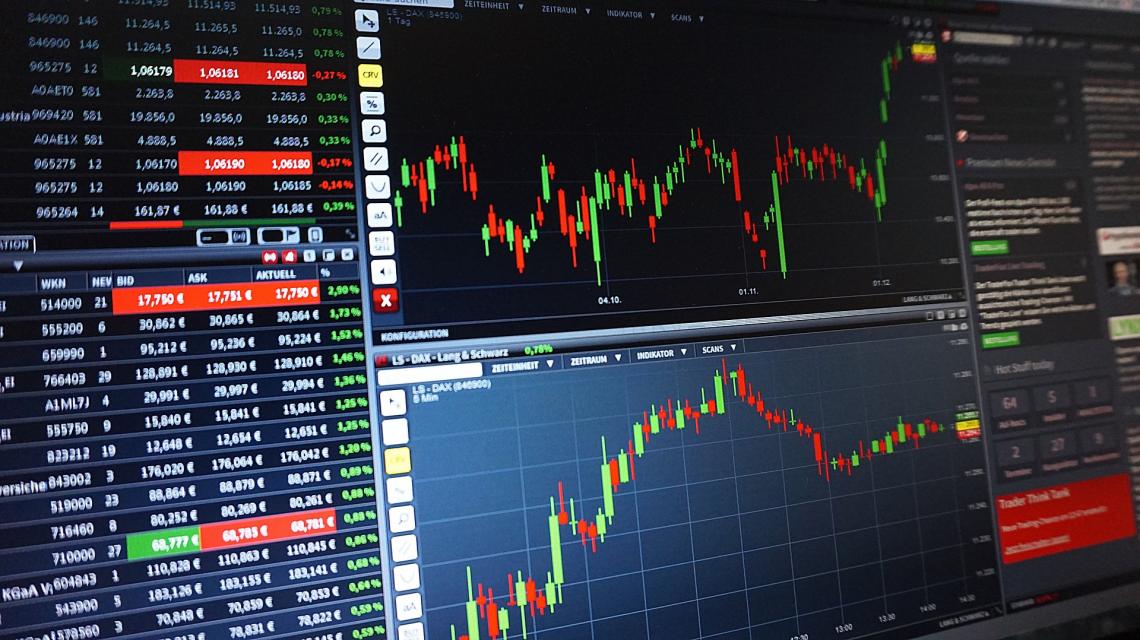Justified Price to Earnings Ratio
What is the Justified Price to Earnings Ratio?
The price to earnings ratio, also called P/E ratio, PE ratio, PE multiple, or PER, is the ratio of a company’s market value to its earnings. It helps the users to assess a company’s share price relative to its earnings over a particular period. It is a popular ratio that is often used along with other measures to evaluate prospective and current investments. It is also used as part of comparable analysis to value companies relative to their peers and the overall industry or market.

PE Ratio: Formula for calculation
There are two ways to calculate the PE ratio, both of which should give the same answer when calculated correctly. They are illustrated below:
A. PE ratio of a company’s stock can be calculated by dividing the share price by the earnings per share.
PE ratio = Share Price / Earnings Per Share (EPS)
B. It can also be calculated as a ratio of the total equity market capitalization of a company and its net earnings for the period.
PE ratio = Total Equity Market Capitalization / Net Earnings
It is of utmost importance to not pick up the EPS given in the financial statements (which use weighted average shares outstanding of previous period) but the currently outstanding shares, as using two different values for a number of shares outstanding leads to incomparable and inaccurate ratios. It is advisable to use formula A because of the complications this may give rise to and to avoid inaccurate results.
To understand the differences in the above two formulas better, please see the below data for Apple Inc. taken from 10-K filings. Please check out our explanation on Form 10-K to learn more about it.
| S. No. | Particulars | Unit | Quantity | Source |
|---|---|---|---|---|
| a | Net income | $ | 94.680 billion | 10-K filing |
| a | Net income | $ | 94.680 billion | 10-K filing |
| b | Shares used to compute EPS in the financial statements (weighted-average for the period) | Number of shares | 16.701 billion | 10-K filing |
| c | EPS in the reported financial statements (basic) [a / b] | $ per share | 5.67 | 10-K filing |
| d | Shares outstanding on the date of valuation (to be used for valuation) | Number of shares | 16.41 billion | Stock market data (October 15, 2021) from YCharts |
| e | EPS used for valuation (basic) [a / d] | $ per share | 5.77 | Calculated |
| f | Share price | $ per share | 156.81 | Stock market data (November 26, 2021) from Yahoo Finance |
| g | Market capitalization [c * e] | $ | 2,573 billion | Stock market data (November 28, 2021) Yahoo Finance |
| h | PE Ratio using formula 1 [f / e] | Ratio | 27.18 | Calculated |
| i | PE Ratio using formula 2 [g / a] | Ratio | 27.18 | Calculated |
| j | PE Ratio calculated from Financial statements (do NOT use for valuation - only for illustration purposes) [f / c] | Ratio | 27.18 | Calculated |
As illustrated above, it is important to use consistent factors while calculating multiple like PE to use in financial analysis. Using the last metric (row j) leads to a significantly different PE ratio and will lead to a lack of comparability of the ratio among companies. If the current weighted average number of outstanding shares is available, it is always better to use that, but since many times this is not the case, beware against using the figures present in the financial statement, as they don’t account for the current point in time.
Interpreting PE ratio
The PE ratio can be interpreted as the number of years it would take for the equity owners to recover their investment through the company’s profits assuming that there is no growth or decline in the earnings.
Let’s suppose that we want to invest in a company ABC that earns $20 per share every year and its share is being sold for $100. Its PE ratio is 5 (= $100 / $20 per year). This implies that if the business continues to earn $20 per share every year, it will take the investor 5 years to recover the entire initial investment of $100 through company profits.
Alternatively, it can also be seen as a way of standardizing the share price against the earnings of a company. In the above case, investors are presently willing to pay $5 for every $1 of annual earnings. Let’s further assume that ABC’s competitor XYZ has its shares being traded at a PE multiple of 8. This would indicate that they are willing to pay $8 for every $1 of XYZ’s earnings.
PE ratios may tell us even more about an investment when looked at in relation to other PE ratios, such as a company’s own past PE multiples, multiples of competitors, and the industry-average multiple. In our example of companies ABC and XYZ, ABC’s PE ratio relative to that of B is 0.625 or 62.5% (= 5 / 8). This means that investors are only willing to pay 62.5% for a share of A compared to B for every dollar of their earnings.
Why are investors willing to pay more for every unit of B’s earnings? We answer in the next section why investors often tolerate higher PE multiples.

PE ratio: Is lower always better?
Usually, a company with a higher PE ratio is seen as relatively overvalued, and a company with a lower PE ratio is seen as relatively undervalued. However, while making an investment decision, that may not always be the case.
Let’s think of the PE ratio as an estimate of the time required to recoup the initial investment through the company’s profits assuming the current earnings stay constant. So, what happens when the rate of earnings increases in the future, or, put differently, the earnings are growing? The initial investment will be recovered faster than the PE ratio would indicate.
When investors foresee growth potential in companies or industries, they are willing to pay a higher price today to gain a share of its increased earnings in the future. This is what pushes PE multiples higher in companies where investors anticipate high growth in the future. As a company grows to maturity and its growth potential diminishes, investors price its shares lower relative to its earnings, bringing down the PE multiple.
The future potential of the company is not reflected in a company’s reported earnings, but investors do adjust for it in their calculations, thus, pricing the shares accordingly by buying shares at a higher PE multiple.
For example, Tesla’s PE ratio in January 2021 was over 1300, implying that investors found it acceptable to recover their investment after 1300 years. That does not make sense as it would be extremely irrational for any investor to find it acceptable to wait 1300 years to recover their investment. Investors anticipated a major boost in Tesla’s future earnings, which justified the higher price that they were willing to pay relative to its current earnings. Investors were expecting a tremendous increase in its demand and earnings in the electric vehicles market in the coming years which would result in them recovering their investment way earlier than 1300 years. When the earnings grow in the future and have lesser room for further growth, the PE ratio would adjust downwards. For instance, the PE ratio of General Motors (a mature company) was close to 12 at the same time as when Tesla’s was at 1300.
A mature company with a higher PE ratio may be overvalued in comparison to other mature companies. At the same time, a higher PE ratio may not always mean that the company is overvalued as it could mean that the investors anticipate growth in its earnings. It may also be worth the effort to look at a company’s PE multiple relative to that of its competitors and its industry average.
Thus, forming an opinion of a company’s valuation solely based on its absolute PE ratio may not be the best idea. PE ratio is a great tool when used with other tools to arrive at a more holistic picture.
What is a good PE ratio?
There is no hard and fast rule with regards to a good PE ratio. A multiple of 5 may be good, and a multiple of 50 may also be good. Interpreting PE ratios comes down to the growth potential of a company and the industry in which it operates.
Some industries, like technology, have more growth potential than other industries which justifies relatively higher PE ratios. The same higher PE ratios may not be acceptable for companies in other industries and might indicate overvalued companies. As a rule of thumb, a company might be considered undervalued if it trades at below the average of the PE ratios of its competitors of similar sizes and growth potential, and overvalued if it trades above it.
In fact, it is not enough to just calculate a ratio. We must also analyze the factors and inputs that lead to the calculated values. In concluding whether a given PE ratio is good or not, the following factors among others may be analyzed:
- Capital structure: More debt in the capital structure of a company would lower its share price to reflect the change in its capital structure. At the same time, the company would also incur financing costs which would reduce its earnings.
- Quality of earnings: Variance in earnings from quarter to quarter comes with new developments in a company’s prospects. Since a constant rate of earnings is an assumption when using PE ratio, it must be ascertained whether a company can at least sustain its current level of earnings, if not grow.
- The growth potential of a company: If the company has room to grow in the market, its current lower earnings may be overlooked in exchange for its increased earnings in the future.
- The growth potential of the industry: A company can only grow as much as its industry allows. Several industries (wired telecom providers, for example) are declining fast. No new company can grow much in such industries without offering some highly sought-after service. There may also be saturated markets where there are many sellers with close to no price-making power.
- Relative PE ratio: It may not always mean that a company is overvalued if it has a high PE multiple if the multiples of its competitors of the same size and growth prospects are also high. On the contrary, it might indicate growth potential across the industry.
- Other factors: Other factors such as economic factors, political factors, technological changes, etc. may affect the operations of the company or its business environment, which may further affect the quality of its earnings or its growth potential.

PE ratio with negative earnings
A company’s PE ratio can be calculated with negative earnings/losses - the ratio would be negative. It would indicate that the company is losing money. Even the biggest companies face periods where they make losses, which may be due to external factors beyond their control or internal operational inefficiencies.
Views widely vary when dealing with cases where the earnings are negative. Despite the lack of any meaningful interpretation, some experts still suggest using a negative PE multiple when using the ratio as part of analyses. Some replace negative PEs with zeroes. Others suggest writing “N/A” (not available/applicable) in the PE ratio column.
Losses are not always a red flag. Losses and negative PE multiples do not mean that the investors will never recover their investment. They can stem from several other reasons other than the declining operating performance of companies, for instance:
- Changes in accounting practices: Accounting items may be classified or measured differently than before, resulting in temporary losses. For example, changes in depreciation in capital-intensive industries.
- Newer companies: Newer companies may not have reached their break-even points yet and might be making losses. Although, they may have great business models that warrant higher share prices than negative PE multiples may justify.
- Investments for future growth: Businesses may utilize funds for future growth which may be prohibited from being capitalized as per accounting standards. Such spending would be expensed in the same reporting period. Spending huge sums on research and development is common in the pharmaceutical industry.
There may be several other reasons for negative earnings. It may be a cause for concern if a company makes losses period after period with no signs of growth or stability. More often than not, this indicates declining financial performance.
Uses of PE ratio
PE ratio is a common tool used by investors and analysts to assess whether the share is fairly valued. It helps us to compare the value of a company relative to its peers, relative to a benchmark, or relative to its own past PE ratio by standardizing various share prices against the earnings of respective companies. To fulfill these ends, PE ratios may be used differently.
Absolute PE ratio
When we normally discuss PE ratios, we talk about Absolute PE ratios. It is computed as the share price per unit of earnings. Companies with higher growth potential, or ones operating in high-growth industries or environments are often seen to have higher PE multiples which means that investors are willing to pay a higher price per unit of their earnings.
Relative PE ratio
Relative PE means the comparison of a PE ratio in contrast to another. The other PE ratio may be that of a competitor, a benchmark, the industry average, or a past PE ratio of the same company. For example, Tesla’s PE ratio on January 8th, 2021, was 1396, and on November 8th, 2021 it was 376. The later PE ratio is 0.2693 or 26.93% (= 376 / 1396) of the older PE ratio from January.
- A company with a seemingly higher PE multiple may not be overvalued if the average PE of its competitors is also high.
- PE ratios lower than the industry average might mean that the companies are undervalued.
- Companies in different industries can have vastly different PE multiples.

Variations of PE ratio
There are many variations of PE ratio which we can either use as absolute multiples or to make relative comparisons with other PE ratios. The two most common variations of PE ratio differ in the earnings which they consider as the denominator in the calculation.
Trailing PE ratio
The Trailing PE ratio is backward-looking. It considers the actual earnings instead of projected earnings. Owing to that, some experts believe it to deliver a more accurate representation of the value of a company.
Trailing PE ratio = Share price / EPS (previous 4 quarters)
Forward PE ratio
The Forward PE ratio is forward-looking. It is calculated based on projected future earnings. Since the projected earnings are often not realized, the Forward PE ratio is seldom used.
Forward PE ratio = Share price / Estimated EPS (next 4 quarters)
Limitations of PE ratio
No single metric provides investors with the complete picture necessary to make an investment decision. The same should be kept in mind for the PE ratio as well. The most common challenges faced by PE ratio as a standalone metric are:
- Negative earnings: There seems to be a lack of consensus on computation and interpretation of PE ratios of non-profitable companies. Some assign a PE ratio of 0, some assign ’N/A’ (not available), while others say that using a negative PE multiple is the right way to go about it.
- Comparisons: A higher PE may not always be worse than a lower PE. A higher PE may also indicate a higher anticipated growth in earnings or the business. Also, PE ratios vary from industry to industry. Using other metrics along with the PE ratio is a must for ensuring a fair comparison. Companies need to be seen relative to other companies in the same industry for a more meaningful comparison.
- Quality of inputs: A formula is only as good as its underlying fundamentals, parameters, and inputs. The two inputs for PE ratios of a company are its share price and earnings. While we can rely on the market for share prices, earnings are reported by the companies themselves. Because of this, it is of utmost importance that analysts and investors scrutinize the financial statements thoroughly to ensure that the policies used to report earnings are similar across the companies being compared.
- Lack of a comprehensive picture: Despite being one of the most used ratios, the PE ratio does not tell us everything about a company. To achieve a complete understanding of a company’s financial performance and future growth, it is important to use the PE ratio in conjunction with other tools.
- Constant rate of earnings: The formula considers that the current earnings will remain constant indefinitely which is an unrealistic assumption.
Free Resources
To continue learning and advancing your career, check out these additional helpful WSO resources:




or Want to Sign up with your social account?